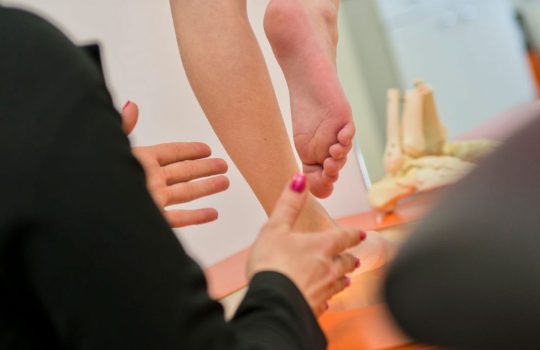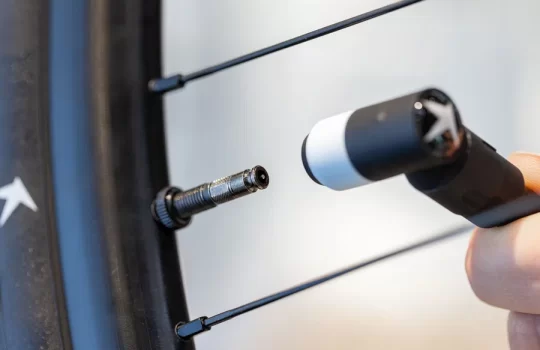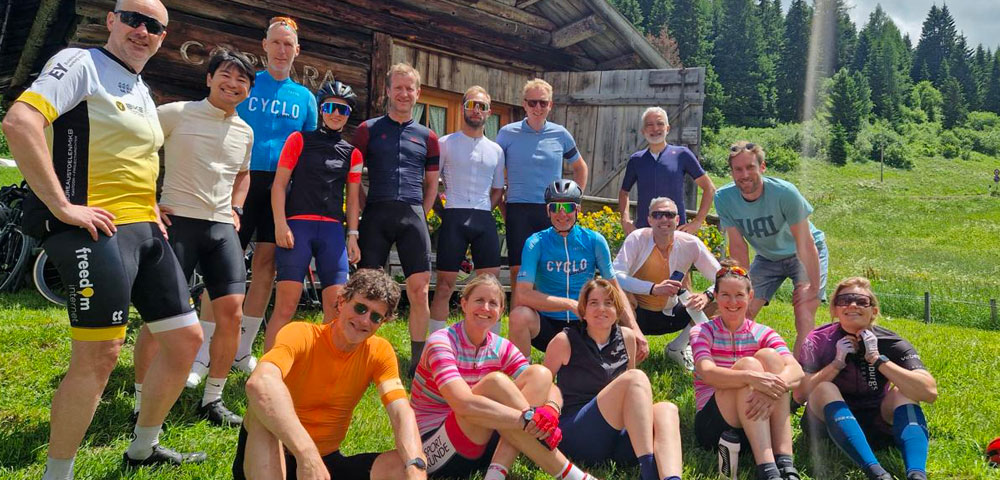How do you prevent injuries in cyclists?
CYCLOsportive spoke with chiropractor from the Jeroen Bosch Hospital Sports Medical Center Wim Brussee to answer this question.
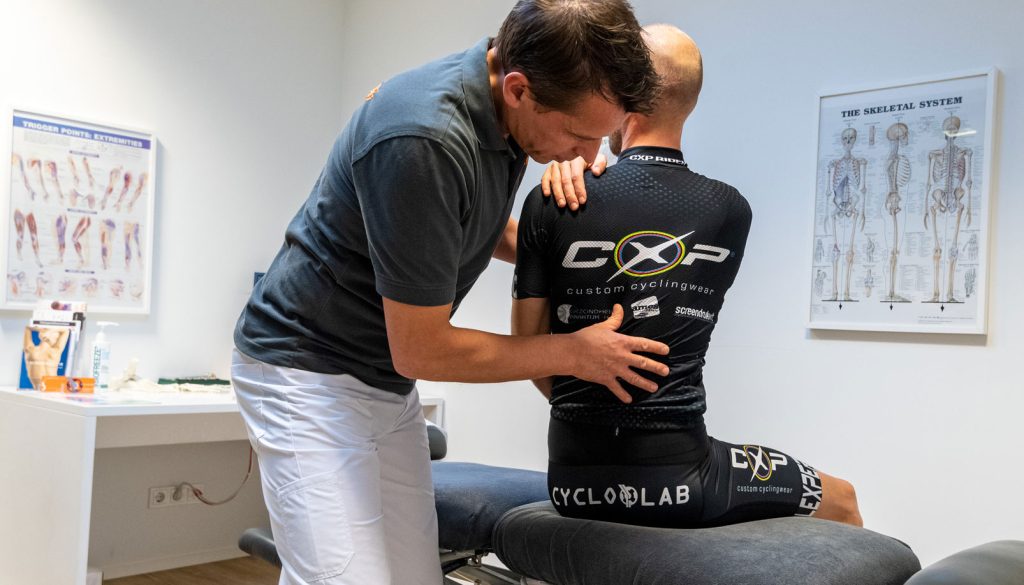
WielerFit XL is a coaching program for all cyclists and mountain bikers, from recreational cyclists to (semi) professionals. Healthy exercise and performance on the bike for everyone, that is our goal! With the team of Wielerfit XL, the Sports Medical Center of the Jeroen Bosch Hospital offers optimal care, advice and coaching for cyclists at every level. Today Wim Brussee, chiropractor, is speaking.
You treat injured cyclists, among other things. What injuries do you see most often?
Among cyclists we mainly see knee complaints, hip-pelvic complaints, neck and shoulder complaints and tingling hands.
Also read: How to prepare for a multi-day cycling trip
Can I call a chiropractor a cracker? Or am I doing you an injustice? What exactly does your job involve?
After working as a physiotherapist-manual therapist in the Netherlands for 6 years, I started studying chiropractic. After completing my chiropractic studies in England, I started as a chiropractor in The Hague in 1997. Many people said back then that they wanted to go to “the cracker”. I was surprised, in England they don’t know that term. There were the so-called “bonesetters” there, these were doctors who treated animals. A very old-fashioned term, I didn’t like that at all. However, after 28 years of working as a chiropractor in the Netherlands, this still hasn’t changed. A lot still needs to happen before we lose that association. I don’t worry about it anymore, my patients know better 🙂. You can call me “the cracker”.
As a chiropractor, you treat injuries. Prevention is better. Common complaints among cyclists are complaints of the neck, shoulders, back, knee and hip. What exercises can cyclists do at home to prevent injuries and how often should you do them?
The best thing to do is to first make sure your joints are flexible, in other words make sure your mobility is good. A mobile joint dictates whether the muscles around it can do their job properly. "Mobility before Strength". You can never develop good coordination and strength before mobility is intact. Your nervous system works like an autopilot in a modern car; before you start moving, your nervous system screens the position of all joints and where you are in space. With every small deviation, your nervous system registers your position using sensors around joints and muscles. Then the movement follows based on all that information. If there is a change, the nervous system reacts in a "split-second" and we adapt. If all joints are mobile, the muscles react optimally and the output (coordination and strength) is optimal. You can then expand this by training. So first work on flexibility (think of yoga, many professional cyclists do this) and then on coordination (balance) and strength.
Also read: How important is a inspanning test?
How does a bike fitting help prevent injuries?
Optimal angles provide a better power transfer and prevent the body from becoming overloaded. If the cyclist has left-right differences, you will notice this in the output and overload occurs on 1 side. Many cyclists come with injuries on 1 side. This is often not due to the bicycle that is built symmetrically, at most to the plates that are not equal. In practice you also often see that a body that is asymmetrical does even worse on an incorrectly adjusted bicycle. If the bicycle position is good, the complaint often disappears partly.
Many companies and bike shops offer a bike fitting. What is a good bike fitting in your eyes?
It all depends on the angle you look at it from. Not doing a bike fit is actually not a good idea, because you run the risk of getting an injury. A bike fit with the aim of determining a frame size can already be a good step; you prevent buying a frame that is too big or too small. With some extra tips you will already sit a lot better. If you then also involve the cyclist himself in the story, then you are really looking at whether on the one hand the bike fits the cyclist, but on the other hand whether the cyclist also fits that bike. The cause of not sitting comfortably on a bike should not always be sought in the bike, often it is due to the engine that has to fit on that bike.
What exactly is a prevention analysis and what does such an analysis look like in practice?
As above I would like to answer that the bicycle is the chassis and the cyclist is the engine. If you look at the engine then it must fit well in the chassis. If it does not then things go wrong in the car industry; the chassis fails or the engine overheats. If you want to prevent this then you have to investigate both and coordinate them. That way you prevent misery and you are working preventively.
Also read: Prepare well and make your Granfondo a success
Will a good bike fitting make you cycle faster?
Well, you should ask it differently: will you cycle more efficiently after a good bike fit? And then I answer yes! Look at who you have in front of you, what are the goals, how trained is someone, how old, how flexible, etc. We can set up every cyclist as if they have to ride a 30 km time trial and then as efficiently as possible. The question is how long will they keep it up and will they still like us at the end of the ride. So everyone can be set up "more aggressively", but how long will they keep this up. A good discussion before - during and after the measurement is important. A bike fitting is by definition a discussion of many elements and if you take it seriously not a snapshot but a process. Every now and then a small correction is still necessary afterwards. Also do not underestimate that your body changes through training and your body structure is constantly adapting.
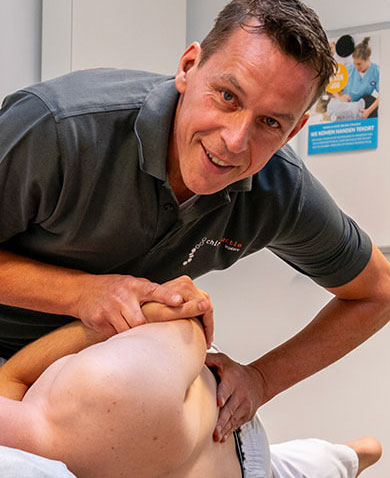
Wim Brussee
Age: 59
Occupation: Sports Chiropractor
Background: Worked as a physiotherapist for 6 years, since 1997 as a (sports chiropractor)
How many hours per week do you spend on your bike: Since last year I've been doing more. I now cycle 7 hours a week, and I'd like to increase that to 10 hours a week. I've also started playing Padel.
